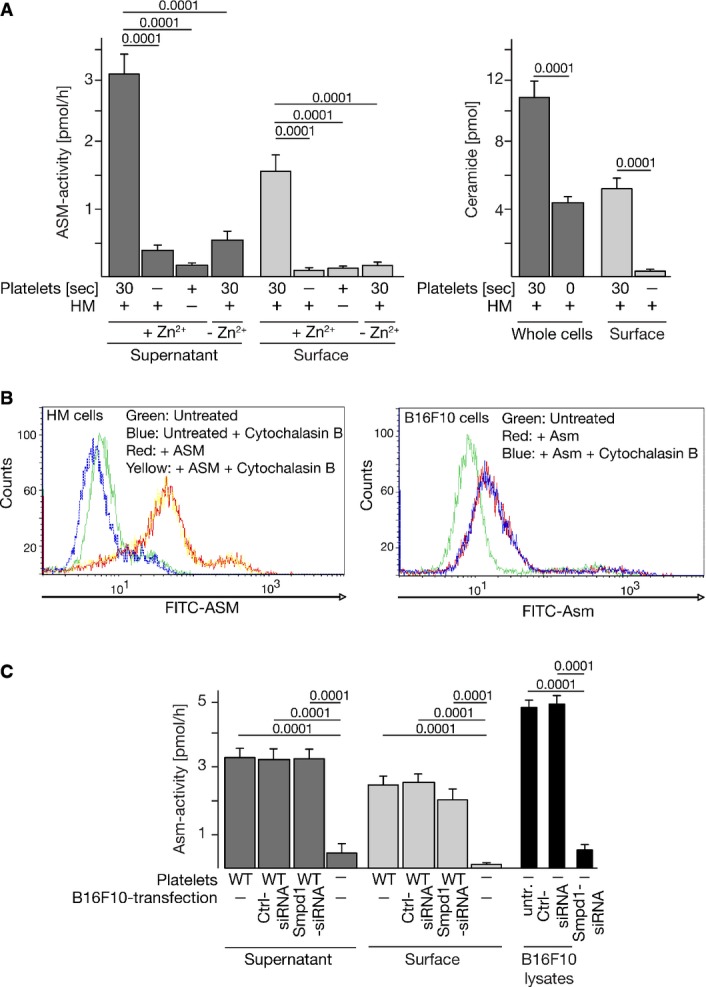Interaction of human or mouse melanoma cells with platelets results in Asm secretion and surface Asm activity independent of Asm expression in melanoma cells
Incubation of human melanoma (HM) cells with human platelets results in the release of Zn2+-dependent ASM into the supernatant, Zn2+-dependent activity of ASM on cell surfaces, and the formation of ceramide. The assay buffer contained 100 μM Zn2+.
Addition of human or mouse recombinant ASM to human melanoma or B16F10 cells, respectively, results in binding of ASM to the tumor cell surfaces as determined by flow cytometry. Cytochalasin B was added to control for internalization of added ASM.
Suppression of Asm in B16F10 tumor cells using siRNA technology reduces Asm activity in B16F10 cells (right panel), but does not alter release or surface activity of the Asm after co-incubation with wild-type platelets (left panels).
Data information: In (A) and (C) are shown the mean ± SD,
n = 4. In (B) representative data from four independent experiments each are displayed. Statistical significance was determined using ANOVA followed by a Tukey's multiple comparisons test.
P-values are indicated (Ctrl: control).

